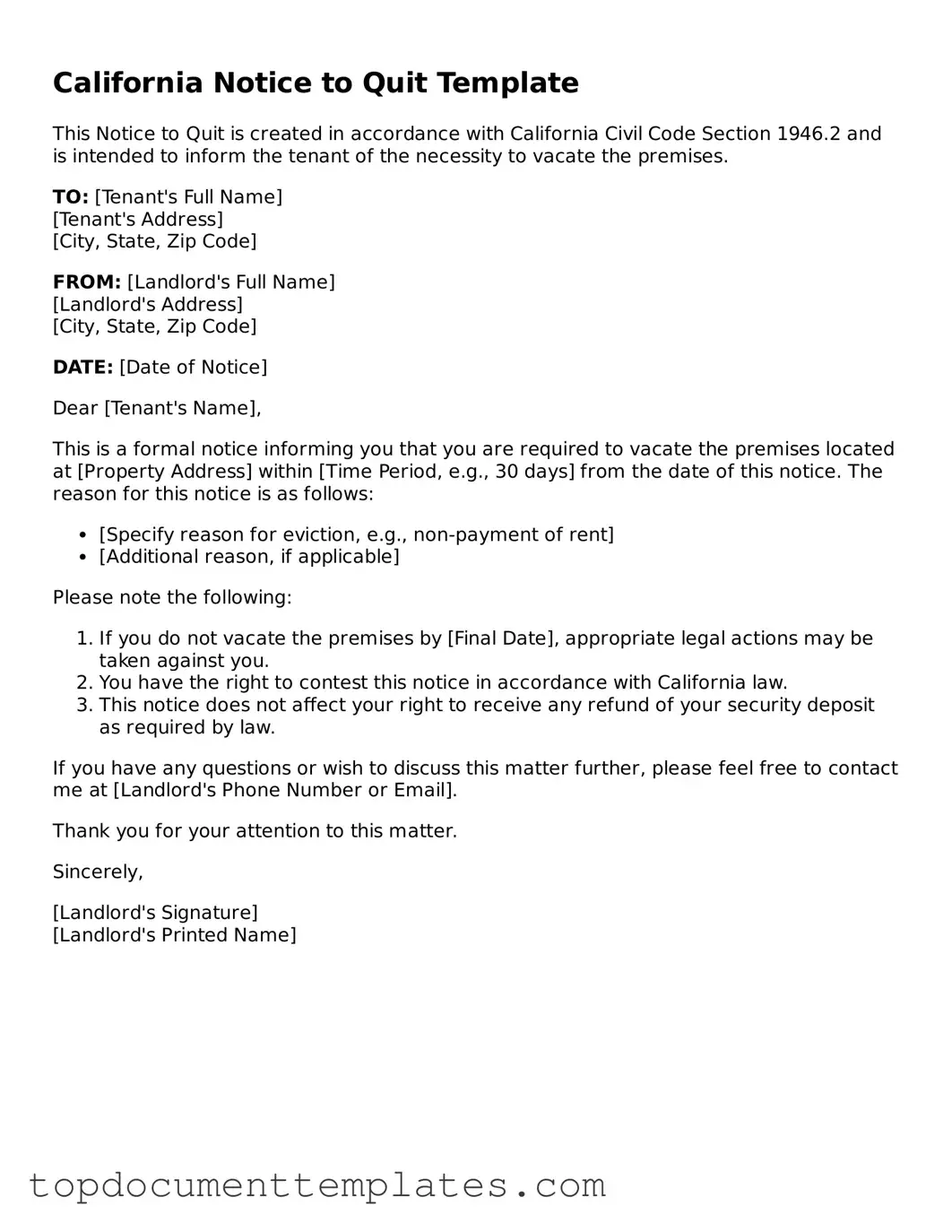Valid Notice to Quit Form for California State
The California Notice to Quit form is a legal document that a landlord uses to inform a tenant that they must vacate the rental property. This form serves as a formal notice, outlining the reasons for termination of the tenancy and the time frame in which the tenant must leave. Understanding this form is crucial for both landlords and tenants to ensure compliance with state laws.
To fill out the Notice to Quit form, click the button below.
Open This Form
